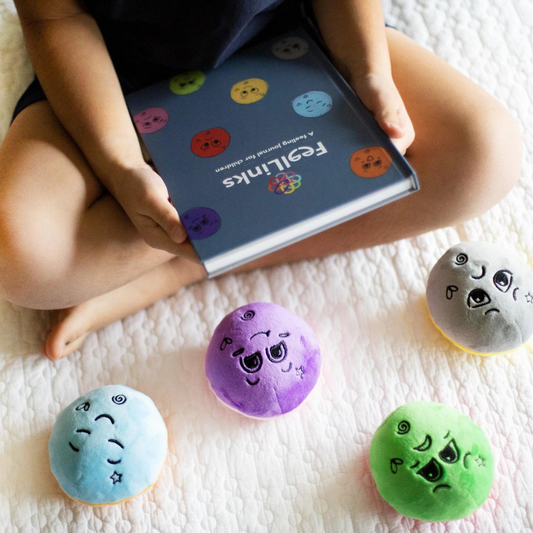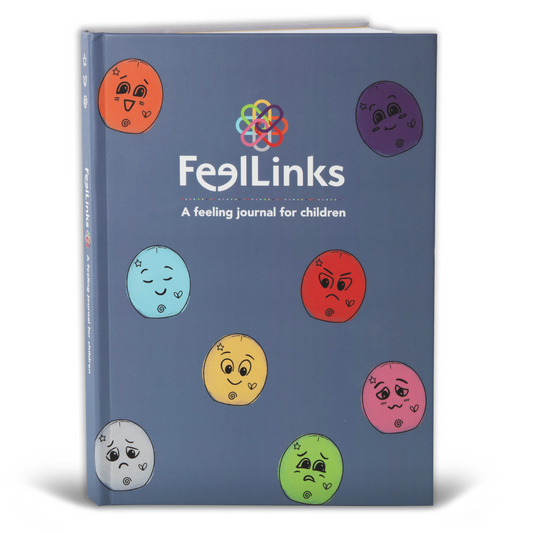A Guide to Recognizing, Handling and Preventing Tantrums
Share

Tantrums are a common and challenging aspect of parenting, often leaving parents feeling overwhelmed and unsure of how to handle them. Let’s explore the reasons behind tantrums, how to recognize them, and effective strategies to cope with and prevent them. By gaining a better understanding of tantrums, parents can foster a more harmonious relationship with their children and navigate these challenging moments with patience and empathy.
What are Tantrums?
Tantrums are emotional outbursts characterized by intense displays of frustration, anger, and sadness. They are a natural part of a child's development, especially during the early years when they lack emotion regulation skills. Tantrums can occur for various reasons, such as fatigue, hunger, or a desire for attention or independence. They are a way for children to express their emotions when they don't yet have the language skills to do so effectively. (Yes! FeelLinks has resources for developing those skills - check out our Journal, Dolls, Feel Trip book and free resources)
Recognizing Tantrums:
Tantrums can manifest in different ways, depending on the child's age and temperament. Common signs of a tantrum include crying, screaming, kicking, hitting, and even breath-holding. Some children may also throw themselves on the floor or display other disruptive behaviors. Understanding the cues that lead to tantrums can help parents anticipate and prevent them when possible.
Strategies for Handling Tantrums:
1. Stay Calm: As challenging as it may be, try to remain calm during your child's tantrum. Reacting with anger or frustration can escalate the situation further. Remember that tantrums are a normal part of childhood development, and your child is not misbehaving intentionally.
2. Validate Emotions: Show empathy towards your child's emotions by acknowledging their feelings. Let them know that it's okay to feel upset or frustrated and that you are there to support them.
3. Offer Comfort and Support: Comfort your child with a reassuring hug or soothing words. Physical touch can help them feel safe and secure during their emotional outburst - however, some children do not enjoy to be hugged or held during those times. Know your child's needs and respect their personal desire and boundaries.
4. Use Distraction (sparingly): Redirect your child's attention to something else that interests them, such as a toy or a game. Distracting them from the cause of their frustration can help defuse the tantrum. I would add to use this sparingly. We don’t want to use distraction as a main way of handling tantrums with our children. We do want and need them to face adversity and learn to bounce back - this is building important life skills in emotional resilience.
5. Set Boundaries: While being understanding, it's essential to set clear boundaries and remain consistent with your expectations. Children need structure to feel secure and understand what behavior is acceptable.
6. Teach Emotion Regulation: As your child grows, gradually teach them how to express their emotions in more constructive ways. Encourage them to use words to communicate their feelings and needs.
Preventing Tantrums:
Although tantrums are a natural part of childhood, some proactive steps can reduce their frequency:
1. Maintain a Routine: Stick to a consistent daily routine, as this can provide a sense of security and predictability for your child.
2. Ensure Adequate Rest and Nutrition: Ensure your child gets enough sleep and eats balanced meals to avoid fatigue and hunger triggers.
3. Give Choices: Allowing your child to make simple choices whenever possible gives them a sense of control and autonomy, which helps in reducing frustration.
Tantrums can be challenging for both parents and children, but they are a normal part of development. By understanding the reasons behind tantrums, recognizing the signs, and using effective coping strategies, parents can navigate these moments with empathy and patience. Remember, parenting is a learning journey, and as you adapt your approach to your child's needs, development and personality, you'll be better equipped to handle tantrums with grace and understanding.





